Tomb 39
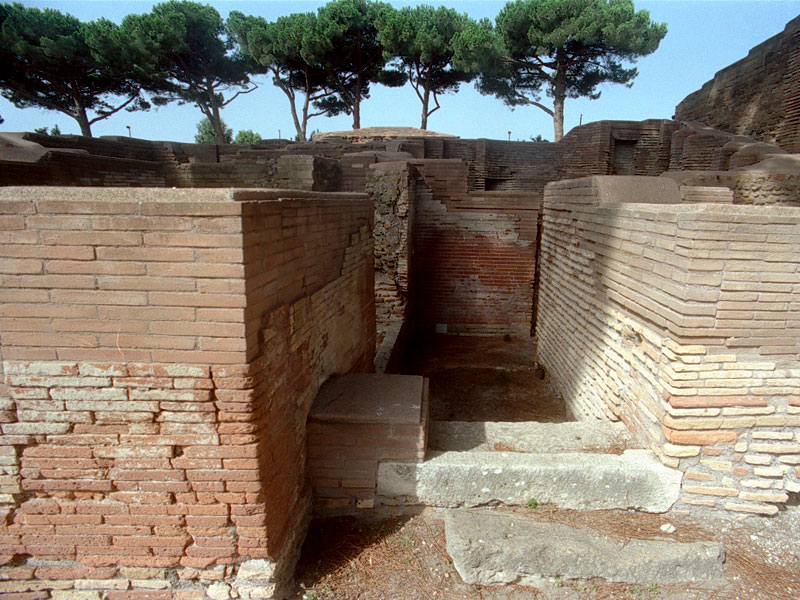
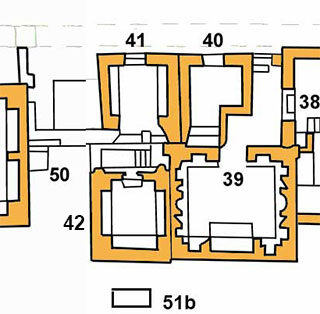 Tomb 39 is only accessible from Via Severiana via the passageway between tomb 38 and tomb 40.
Tomb 39 is only accessible from Via Severiana via the passageway between tomb 38 and tomb 40. On the right side the tomb borders on tomb 42 and on the left side partly on the enclosure of tomb 38.
Tomb 39 shares its facade on the right side with the back wall of tomb 40.
Tomb 39 has a burial chamber equipped for both inhumation and cremation. In the burial chamber the upper walls were occupied by a central, semicircular niche with stucco columns flanked by two rows of small, rectangular niches.
The lower parts of three walls contained two arcosolia each and the wall with the entrance only one. Beneath the floor, once covered with a black-and-white mosaic, were 10 formae, each with room for one body. Several of these graves were closed by tiles with stamps, by which we now know the exact date, 160 AD.
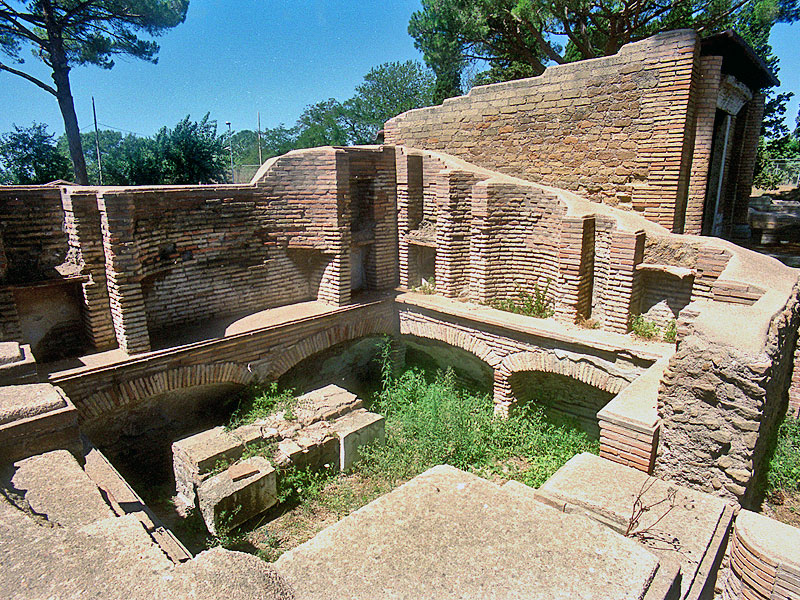
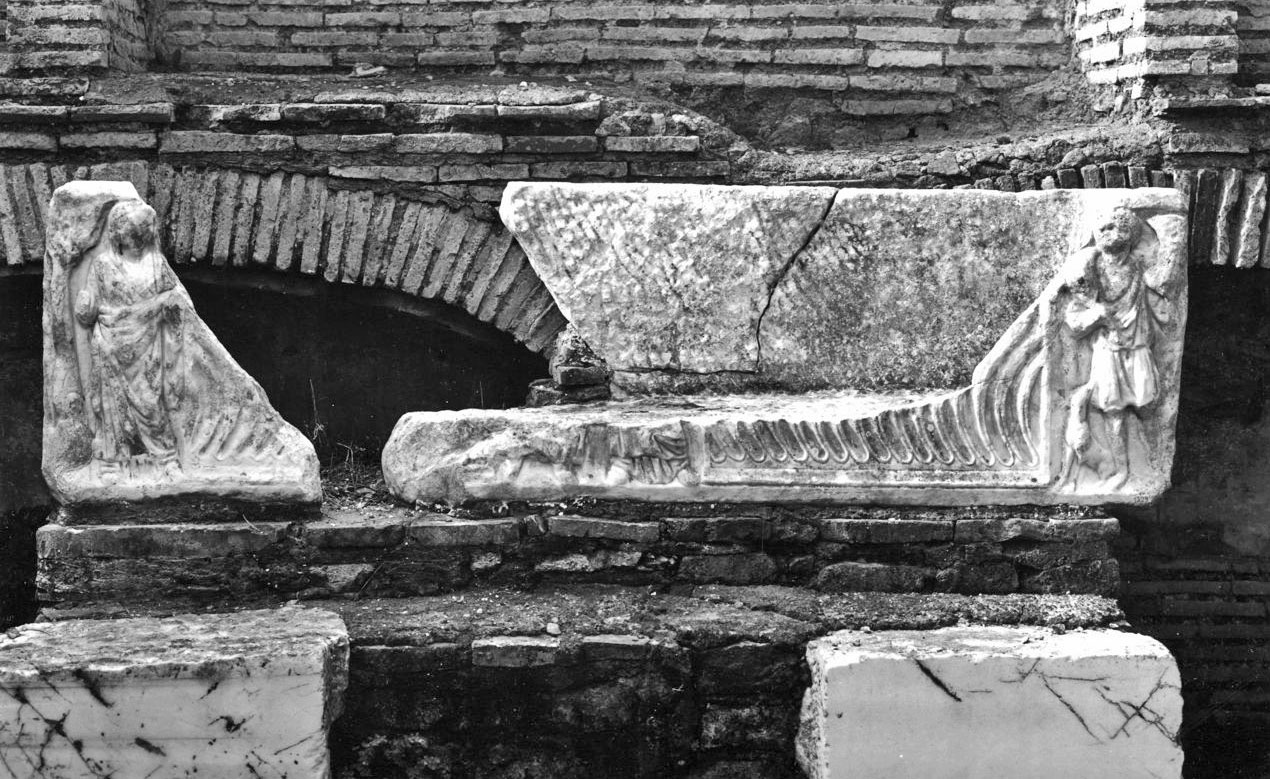
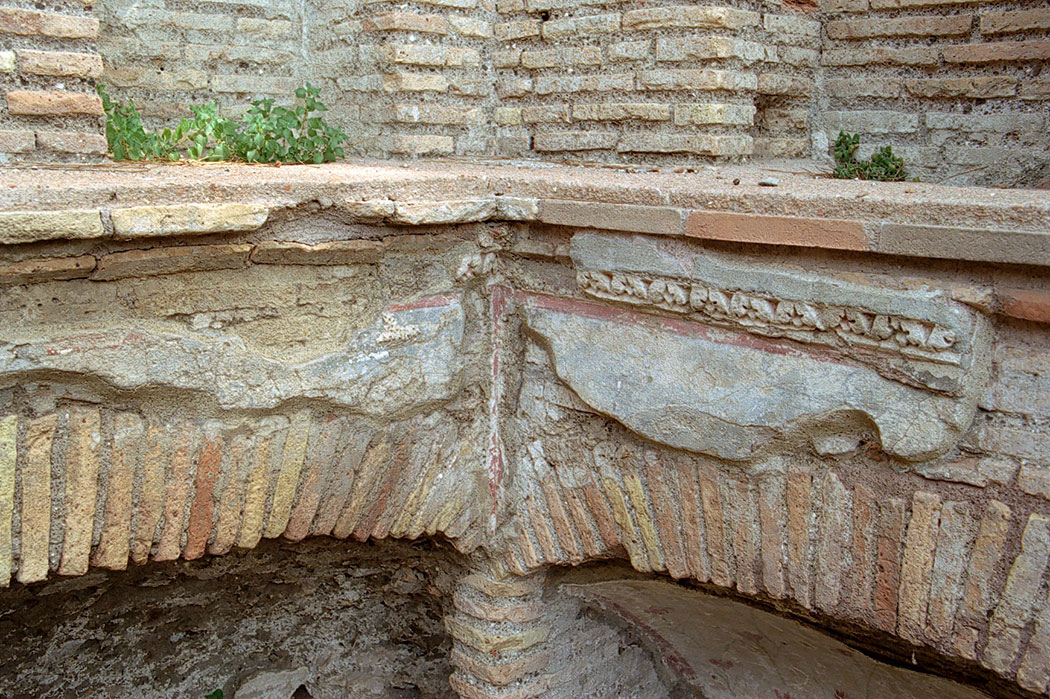
Tomb 39 has known a time of reuse. Against the arcosolium in the back wall of the burial chamber a low wall of marble blocks was built. This wall served as the support for a sarcophagus which is now in the Ostian museum. In the centre of the sarcophagus two figures were depicted of which only the feet are still visible. In one corner of the sarcophagus we see a female figure. In the other corner is "The Good Shepherd".
This Christian sarcophagus dates from the end of the third or the beginning of the fourth century AD, the last period that the necropolis was in use.
Because of the L-shape of tomb 40, the access route to tomb 39 has that L-shape as well. Beneath the floor of the access route too people have been buried.
- Sources
- Russel Meigs - Roman Ostia, At the Clarendon Press 1973
- Guido Calza - Necropoli nell'Isola Sacra'(1940)
- Dr. Jan Theo Bakker.
- Hilding Thylander - Inscriptions du port d'Ostie (Lund C W K Gleerup 1952).
- Ida Baldassarre, Irene Bragantini, Chiara Morselli and Franc Taglietti - Necropoli di Porto, Isola Sacra (Roma 1996).
- Notes
- 1:The entrance of the access route has a threshold. I. Baldassarre suggests that the alley in later time has been used as a burial chamber when the original tomb 39 became out of use. This should have happened in the last period of the necropolis. She does not explain what happened with the entrance of tomb 38 which lies along the alley too. Also tomb 38 was, as we saw, in use for an extremely long time. (note of the author) I, Baldassarre, I. Bragantini, Ch. Morselli and F. Taglietti: “Necropoli di Porto” 1996
Isola Sacra Index (F)

Section spéciale consacrée au cimetière romain de Portus (en anglais)....
Lire la suite...Leptiminus (Anglais)
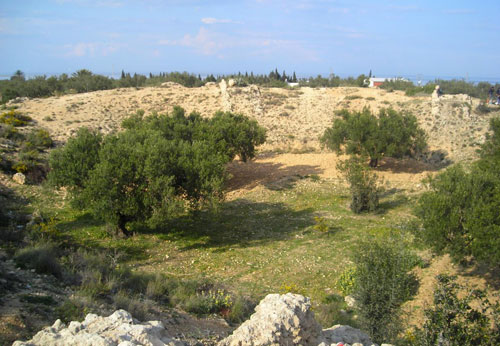
At the site of present-day Lamta on Tunisia's east coast, there was already a port city named Leptis Minor ....
Lire la suite...Droit romain du commerce maritime(Anglais)

Roman law is the finest monument that Rome bequeathed to Western Europe....
Lire la suite...Sullecthum (Salakta) Anglais

In the Sahel, in the Tunisian province of Madhia, we find by the sea the small town of Salakta....
Lire la suite...Colonia Julia ad Turrem Libisonis (Anglais)

.....probably founded by Julius Ceasar around 46 BC, was located in the north-west of Sardinia.
Lire la suite...
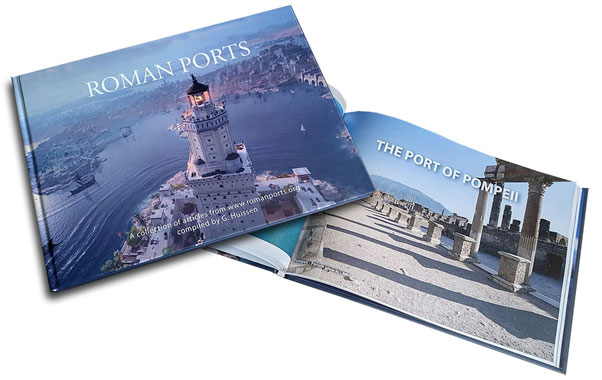
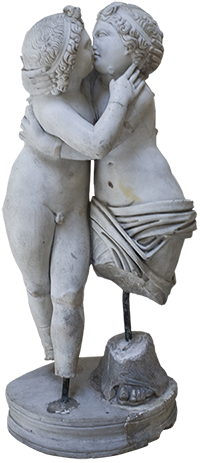 We are committed to providing versions of our articles and interviews in several languages, but our first language is English.
We are committed to providing versions of our articles and interviews in several languages, but our first language is English.